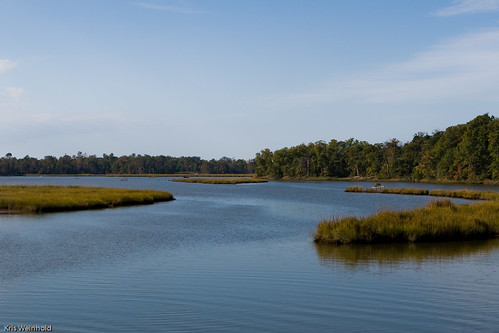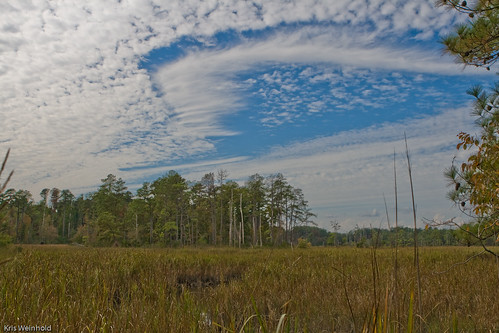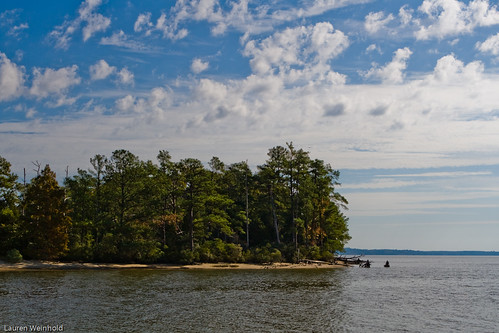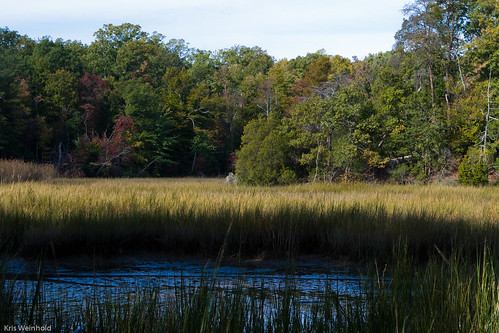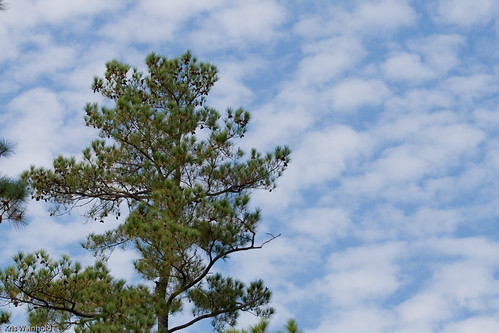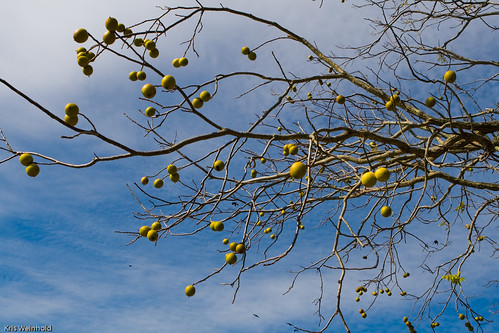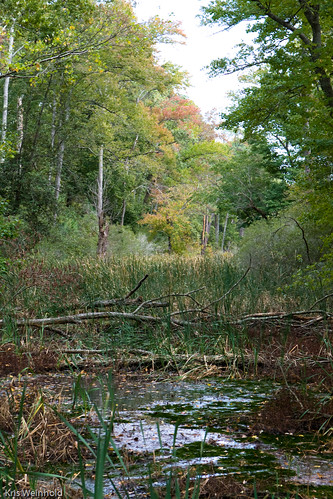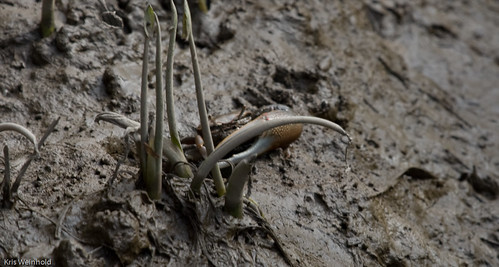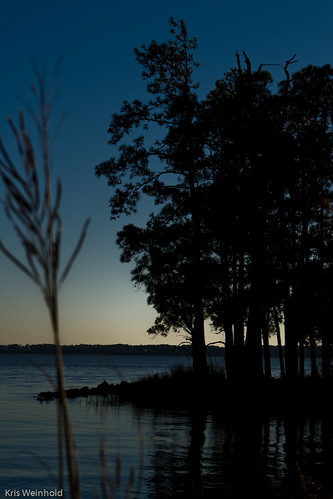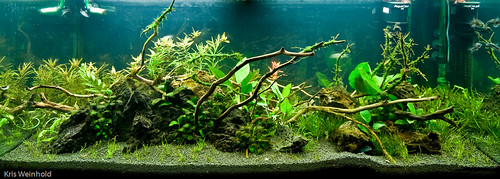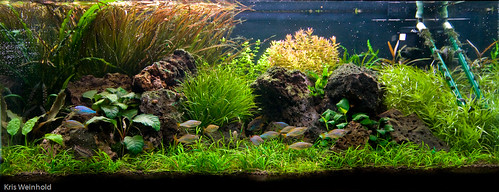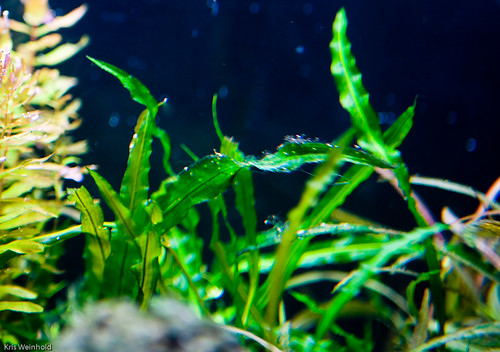Jamestown Island
November 5th, 2007I recently spent a few days down in Colonial Williamsburg, where I had the opportunity to visit historic Jamestown Island, the location of America’s first colony. Of course, while I did pay quite a bit of attention to history at hand, I also enjoyed the beautiful watershed that surrounds the entire area.
A number of creeks and rivers come together at this area near the Atlantic Ocean. Much of the area is brackish, with extensive marshes lining the banks all around, providing some really beautiful views.
In the skies, above the pine trees, lots of large waterfowl circled overhead occasionally dive-bombing the water for fish or other tasty critters. I tried to get some pictures of these birds, but I didn’t come away with anything I was proud to show.
We also saw a number of fish jumping from the water, and fisherman on the banks trying to catch them. There were nice beaches to walk along, but unfortunately that serene environment was ruined a little bit by signs reading that the water is unsafe to swim in.
According to some of the roadside signs, the Jamestown area was originally full of hardwood trees, which were quickly cut down by the settlers for building and export. While a few hardwoods still remain, most have been replaced by the fast-growing pines we see all over the eastern United States.
I’m not sure if they’re native or not, but in the historic Jamestown area, walnut trees were quite prominent. The walnut fruit and nuts lined many of the pathways and grassy areas under the trees.
A number of swampy areas also were present throughout the island. Where the reeds and rushes were not, there was no shortage of mud, especially during low tide.
As I was walking along a path, I noticed a large number of holes and pits in the muddy banks. Then, I swore that I saw something moving out of the corner of my eye, but every time I looked, there was nothing there. Eventually, I saw clearly what was scurrying along. Fiddler crabs came out of the holes to sit in the sun, until they detected movement, in which case they hurried back into their holes.
While I wasn’t really searching through the water itself, the only freshwater aquatic vegetation I recognized was a plethora of duckweed. Being a national park, it would be illegal to collect any plants there anyways, so I was more than content simply enjoying the beautiful views.
